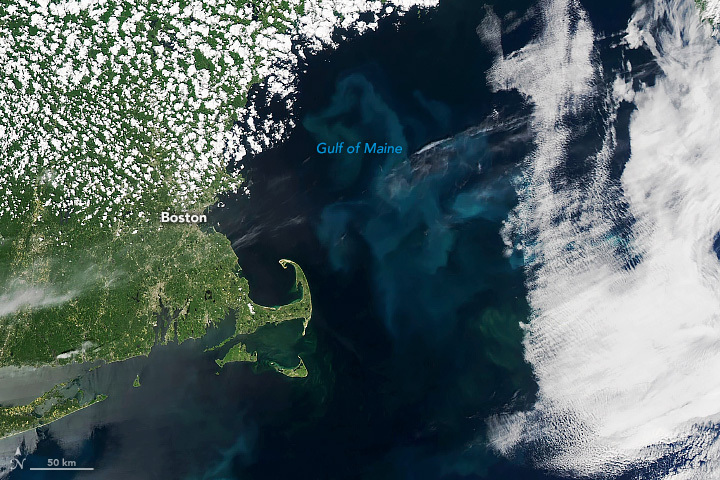"It's all being driven by this gigantic windmill effect happening out in the North Atlantic, which is also changing the circulation coming into the Gulf of Maine," Balch explained. "There used to be these inflows from the North Atlantic bringing water from the southward-flowing Labrador Current, making the gulf cooler and fresher, as opposed to warmer and saltier, which is where we are now."
Since 1998, the Bigelow Laboratory has tracked several biogeochemical changes in the gulf with GNATS. The team collects samples via commercial ferries and research vessels running the same routes repeatedly. They also use autonomous gliders that cross the same sampling line.
The GNATS dataset ultimately will compare changes observed directly on the gulf's surface waters to observations by NASA satellites acquiring ocean color data. The measurements complement satellite observations from space that can sometimes be clouded by fog.
Data on the many colors of the ocean associated with different types of concentrations of phytoplankton within the GNATS dataset are expected to contribute to the upcoming observations by NASA's Plankton, Aerosol, Cloud, ocean Ecosystem mission, which will help study phytoplankton communities and track harmful algal blooms that can disrupt ecosystems, fisheries and tourism in the Gulf of Maine.
"We are focused very much on that lower level, the phytoplankton level," said Catherine Mitchell, an oceanographer at Bigelow Laboratory and a study coauthor. "But the changes at that level can have all these implications at the higher species, the fisheries, the lobster, and all those kinds of industries that are important within the state of Maine and other states that border the gulf."







